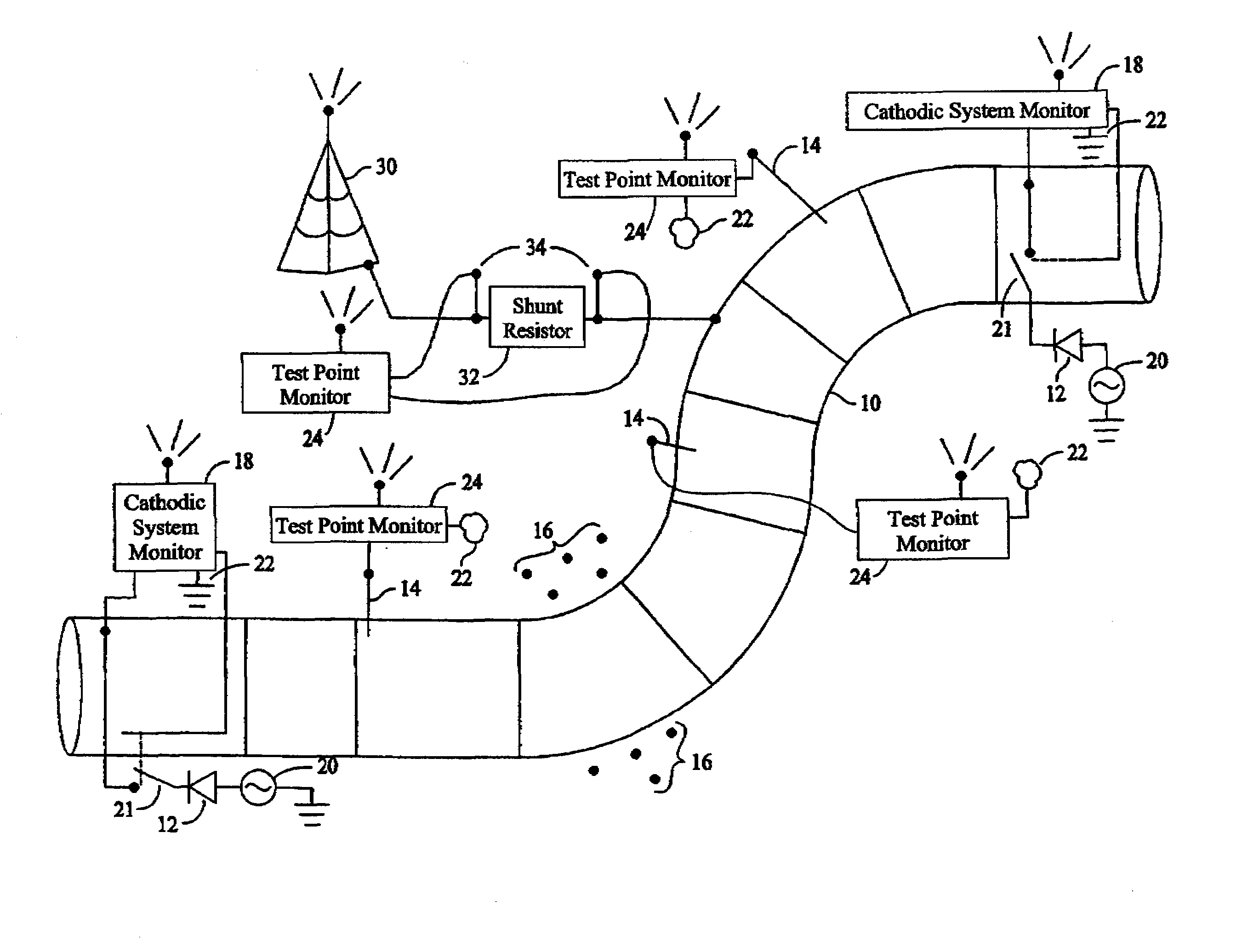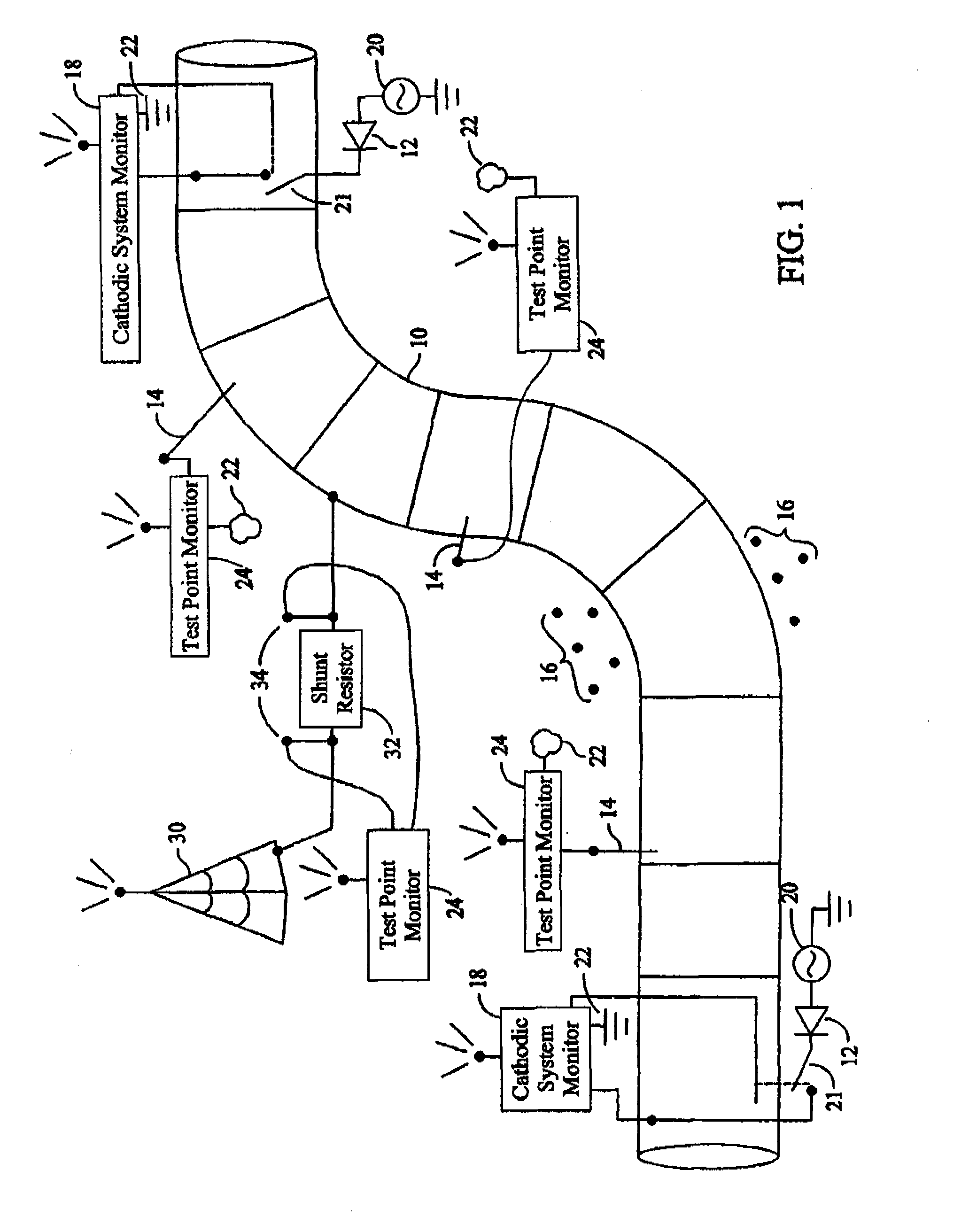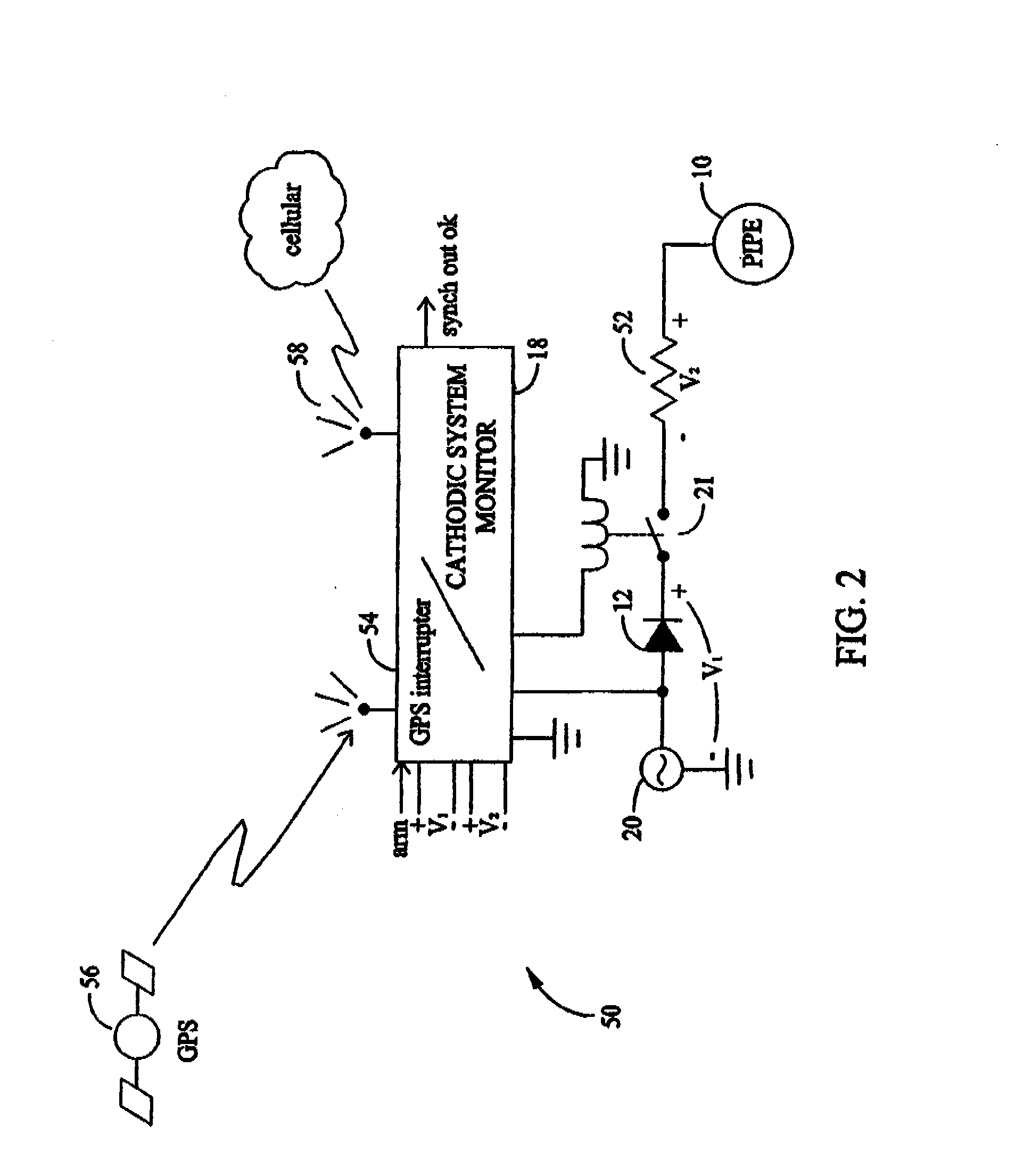Methods and systems for automated pipeline testing
a pipeline and automated technology, applied in the field of underground pipeline maintenance and testing, can solve the problems of high manual process of conducting close interval surveys, potential errors, and inherently subject to corrosion of pipes and other metallic structures
- Summary
- Abstract
- Description
- Claims
- Application Information
AI Technical Summary
Benefits of technology
Problems solved by technology
Method used
Image
Examples
Embodiment Construction
[0032]FIG. 1 is a schematic diagram of a pipeline 10 illustrating cathodic protection rectifiers 12, test points 14, and close interval survey test points 16. Cathodic system monitors 18 are utilized to measure, verify, and report output voltages and applied currents from cathodic protection rectifiers 12 on a pre-determined schedule, for example, once every two months. Cathodic system monitors 18 (described further in FIG. 2) are utilized to measure applied current, in one embodiment, by measuring a voltage drop across a low resistance value resistor (e.g. a shunt resistor (shown in FIG. 2)). Monitors 18 may also be configured to monitor power 20. In a particular embodiment, monitors 18 are configured to control switching devices, for example, relays 21 which switch the voltage output from cathodic protection rectifiers 12 to pipeline 10.
[0033] Known cathodic protection rectifiers are typically placed along a pipeline, for example, every three to five miles. The rectifiers are uti...
PUM
 Login to View More
Login to View More Abstract
Description
Claims
Application Information
 Login to View More
Login to View More - R&D
- Intellectual Property
- Life Sciences
- Materials
- Tech Scout
- Unparalleled Data Quality
- Higher Quality Content
- 60% Fewer Hallucinations
Browse by: Latest US Patents, China's latest patents, Technical Efficacy Thesaurus, Application Domain, Technology Topic, Popular Technical Reports.
© 2025 PatSnap. All rights reserved.Legal|Privacy policy|Modern Slavery Act Transparency Statement|Sitemap|About US| Contact US: help@patsnap.com



